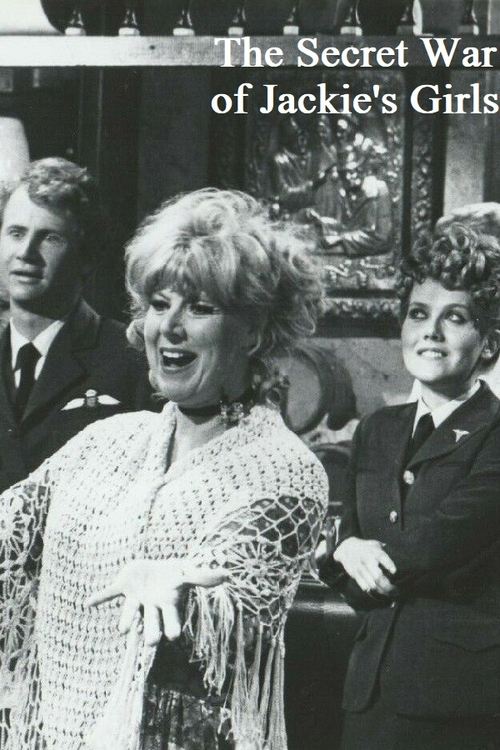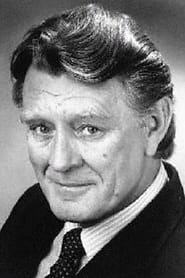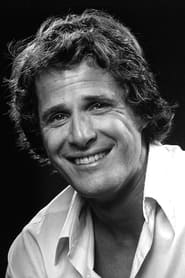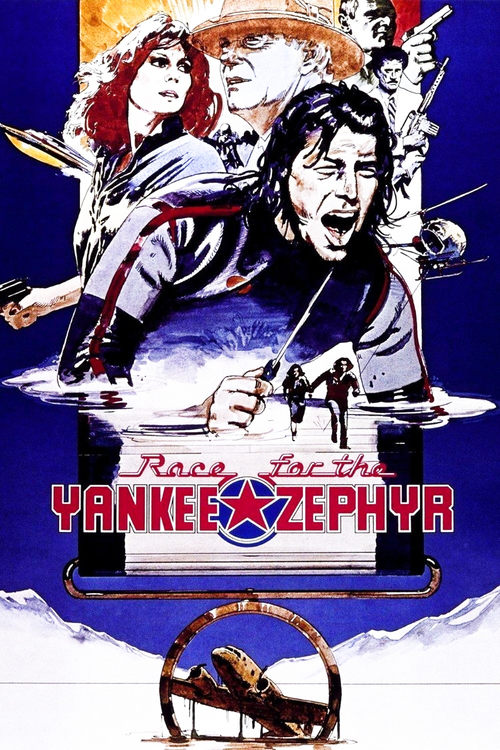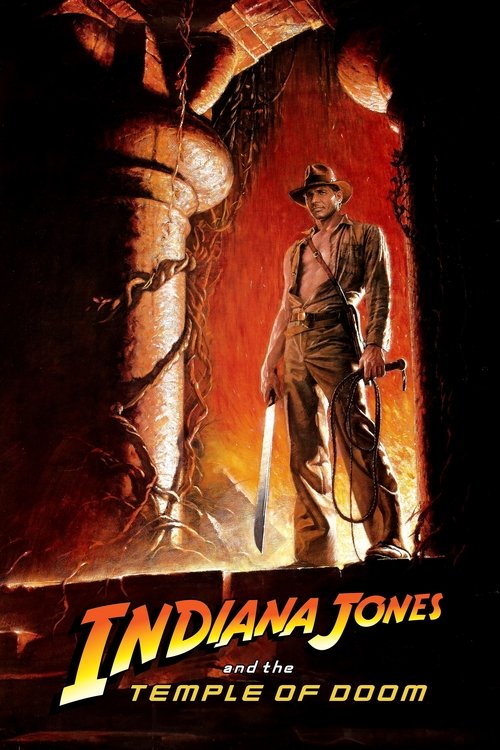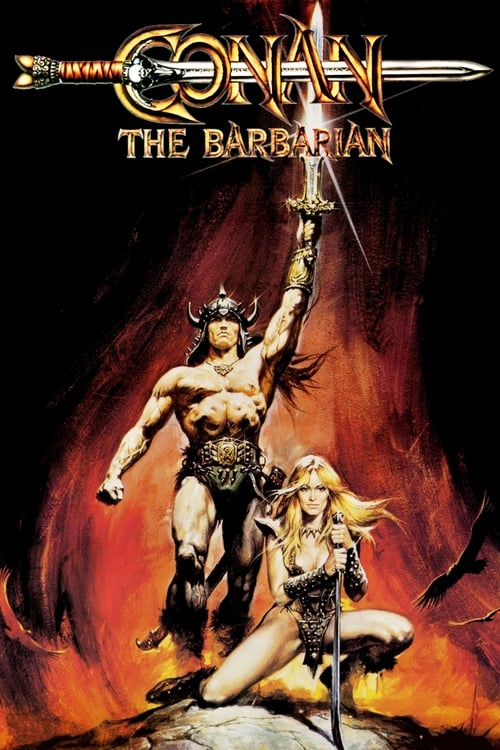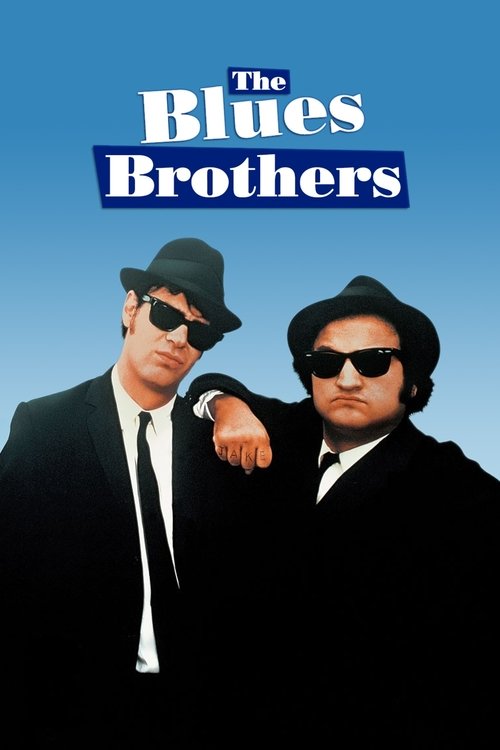
Ask Your Own Question
What is the plot?
The Secret War of Jackie's Girls: Complete Plot Narrative
The film opens with a sweeping aerial shot of a British airfield during the early years of World War II, before America has officially entered the conflict. The camera pulls back to reveal the bustling activity of wartime England--aircraft being prepared, personnel moving with urgent purpose across the tarmac. But the true heart of the story emerges not in the daylight of the airfield, but in the shadows beneath London itself.
Deep underground, in a subterranean pub hidden from the German bombs that rain down on the city above, we meet the pilots who will carry this story. The pub is a sanctuary of sorts, a place where ex-pat Americans, French counts, and British RAF personnel gather to escape the horrors of war, if only for an evening. The walls are thick enough to muffle the sound of explosions, and the atmosphere is thick with cigarette smoke and the melancholy strains of Cole Porter songs played on a battered upright piano. This pub will become the emotional center of the entire film--a place where secrets are shared, alliances are forged, and the bonds between these women are tested and strengthened.
It is here that we first encounter Jackie, portrayed by Lee Purcell with commanding presence and undeniable charisma. Jackie stands before her assembled team of female pilots, and her voice cuts through the ambient noise of the pub with authority. "We're not just flying planes," she declares, her eyes moving from face to face around the room, "we're flying hope." There is something almost prophetic in her words, though neither she nor anyone in that underground sanctuary could know how soon those words would take on a tragic resonance.
Jackie is the leader of this extraordinary group--six female helicopter pilots recruited for a mission so secret that few in the military hierarchy even know it exists. These are not ordinary women, and this is not an ordinary war. The mission they have been assigned is audacious, dangerous, and absolutely critical to the Allied cause. They will fly behind enemy lines, deep into occupied Europe, to extract spies, smuggle refugees to safety, and transport weapons and supplies to resistance fighters. They will operate in the shadows, their missions cloaked in secrecy, their identities known only to a select few.
Beside Jackie stands Casey, played by Mariette Hartley, who serves as her second-in-command. Casey is beautiful in a severe way, with sharp features and an intensity that radiates from her. But there is something emotionally distant about her, something that becomes increasingly apparent as the film progresses. She attempts to flirt with a disreputable RAF pilot--a man with the worn-down charm of someone who has seen too much and cared too little--but her efforts are wooden and awkward. She grimaces through the interaction like a ventriloquist's dummy, her face contorting into expressions that seem foreign to her, as if smiling and flirtation are skills she has never quite mastered. This emotional reserve will define Casey throughout the film, though it is never explicitly acknowledged in dialogue. It simply hangs over her like a shadow.
The other pilots are introduced in quick succession, each bringing their own personality and skills to the group. Dee Wallace plays one of the pilots, a woman of obvious skill and fearlessness. During a training exercise, she performs a daring helicopter maneuver that leaves her teammates breathless with admiration. The others are a mix of backgrounds and temperaments--one is a former streetcar conductor (a detail that contains a historical inaccuracy, as such workers are known as bus conductors in Britain, not streetcar conductors), another claims to be a French count, and the rest are ex-pat Americans drawn to England by the war and by the opportunity to serve in this extraordinary capacity.
The pub scenes dominate the early portion of the film, and there is something almost surreal about them. While bombs fall on London above, the pilots gather around the piano and sing. Cole Porter's sophisticated melodies fill the underground space--songs about love and loss and the bittersweet nature of human connection. The piano itself becomes almost a character in the film, a symbol of civilization and culture persisting in the face of barbarism and destruction. Fully a third of the film will be spent in this pub, with the pilots braying Cole Porter songs, planning missions, sharing stories, and forging the bonds that will hold them together through the horrors to come.
The film then transitions to the operational aspects of their mission. The pilots are based at a British airfield equipped with helicopters--aircraft that are still relatively new and experimental in this period of the war. The landscape around the airfield is surprisingly dusty, mountainous, and ravine-strewn for England, creating a surreal backdrop for the action sequences. There is a surprising amount of helicopter flying throughout the film, with the pilots executing complex maneuvers and navigating treacherous terrain.
The missions themselves take the pilots behind enemy lines, into occupied Europe where the danger is constant and immediate. They fly into forests and mountains, landing in clearings to pick up spies and refugees. They navigate through anti-aircraft fire, their helicopters vulnerable to German fighters. Each mission is a calculated risk, a balance between the critical importance of their cargo and the very real possibility that they will not return.
It is during one of these missions that tragedy strikes. Jackie, the leader who inspired her team with her words about flying hope, finds herself in a situation she cannot escape. Her helicopter comes under fire from German forces. The aircraft is hit, damaged beyond the point of recovery. There is no miraculous escape, no last-minute rescue. Jackie's helicopter is shot down, and she is killed in the crash. The death comes early in the film, a shocking moment that reverberates through the entire narrative. Jackie's death is not a climactic finale--it is a turning point, a moment that transforms the group and forces them to confront their own mortality.
The impact of Jackie's death on the remaining pilots is profound and immediate. They gather again in the pub, and the atmosphere has changed. The Cole Porter songs seem sadder now, more elegiac. The camaraderie that bound them together is tested by grief and loss. But from this tragedy emerges a new leadership structure. Casey steps forward to take Jackie's place. The woman who could not smile, who seemed emotionally distant and reserved, becomes the new leader of the group. It is as if Jackie's death has crystallized something in Casey, has given her a purpose and a resolve that transcends her emotional limitations.
Casey asserts her authority with quiet determination. She stands up to the disreputable RAF pilot who had tried to take advantage of her, making it clear that she will not be manipulated or diminished. She takes control of the remaining missions, planning them with meticulous care, ensuring that every detail is accounted for. The pilots look to her for guidance, and she does not fail them.
The remaining pilots continue their dangerous work. They fly mission after mission, each one a test of their courage and skill. They face confrontations with German forces--aerial dogfights where their helicopters are outgunned but where their pilots' superior skill and determination give them an edge. They land in hostile territory to extract spies and refugees, never knowing if they will encounter German patrols or if their landing zone has been compromised.
Throughout these missions, the pilots maintain their bond. They return to the pub between operations, gathering around the piano to sing and to process their experiences. The pub becomes a place of healing and remembrance, a space where they can acknowledge their losses and draw strength from each other. The battered upright piano continues to play, its keys worn smooth by countless fingers, its wood scarred by years of use. It is a symbol of their resilience, of their refusal to be broken by the horrors they witness.
The film builds tension through a series of increasingly dangerous missions. Each operation raises the stakes, each confrontation with German forces becomes more intense. The pilots are constantly aware that they are operating on borrowed time, that their luck cannot hold forever. They have already lost Jackie. They know that more losses are inevitable.
But the film does not dwell on despair. Instead, it emphasizes the courage and determination of these women. They continue to fly, continue to risk their lives, continue to sing Cole Porter songs in an underground pub while bombs fall on the city above. They are not heroes in the traditional sense--they do not deliver grand speeches or engage in dramatic last stands. They are simply women doing their duty, performing their missions with professionalism and skill, drawing strength from each other and from the knowledge that their work matters.
The visual language of the film reflects this tension between the mundane and the extraordinary. The aerial photography is described as quite marvelous, capturing the beauty and danger of flying over occupied Europe. The landscape is rendered in stark detail--mountains and ravines, forests and clearings, all rendered in the dusty, hazy tones of wartime cinematography. The helicopters themselves become almost characters in the film, their mechanical forms silhouetted against the sky, their rotors cutting through the air with a rhythmic precision.
As the film progresses, the pilots face a series of confrontations with German forces. These are not elaborate battle sequences but rather tense, intimate encounters. A helicopter comes under fire and must execute evasive maneuvers to escape. A landing zone is compromised, and the pilots must make a split-second decision to abort the mission or push forward. A pilot is wounded but continues to fly, refusing to let her injury compromise the mission. These moments accumulate, building a sense of cumulative danger and stress.
The film also explores the emotional toll of their work. The pilots are young women, far from home, engaged in work that is both exhilarating and terrifying. They form deep bonds with each other, bonds forged in shared danger and shared purpose. But they also experience loss and grief. Jackie's death haunts them, a constant reminder of their own vulnerability. They wonder if they will survive the war, if they will ever see their homes again, if the sacrifices they are making will ultimately matter.
Casey emerges as a complex and compelling leader. Her emotional reserve, which initially seemed like a limitation, becomes a strength. She does not allow sentiment to cloud her judgment. She makes difficult decisions with clarity and resolve. She mourns Jackie's death, but she channels that grief into a determination to complete their missions and to protect her remaining pilots. Her inability to smile, which was so apparent in the early scenes, becomes almost irrelevant. What matters is her competence, her courage, and her commitment to her team.
The other pilots each have their moments of heroism and vulnerability. Dee Wallace's character continues to perform daring maneuvers, pushing the limits of what the helicopters can do. The former streetcar conductor brings a working-class practicality to the group, solving problems with ingenuity and common sense. The French count provides a touch of continental sophistication and brings valuable intelligence about conditions in occupied Europe. Each pilot contributes to the success of the missions in their own way.
The pub scenes continue throughout the film, providing moments of respite and reflection. The pilots gather around the piano and sing, their voices blending in harmony. The songs are bittersweet, filled with longing and melancholy. They sing about love and loss, about the passage of time, about the uncertainty of the future. The pub becomes a sanctuary not just from the bombs falling on London, but from the horrors of war itself. It is a space where these women can be themselves, where they can acknowledge their fears and their hopes, where they can draw strength from each other.
The film builds toward a climax that is not a single dramatic moment but rather a series of increasingly dangerous missions. The pilots are pushed to the limits of their abilities. They fly in bad weather, through anti-aircraft fire, into situations where the odds seem impossible. But they persist, driven by duty and by loyalty to each other. They know that their work is critical, that the spies and refugees they extract could provide intelligence or escape routes that could change the course of the war. They know that the weapons and supplies they transport could make the difference between success and failure for resistance fighters in occupied Europe.
The final missions are the most dangerous. The Germans have become aware of the pilots' activities and have increased their efforts to stop them. Fighter aircraft are scrambled to intercept the helicopters. Anti-aircraft batteries are positioned along potential flight routes. The pilots must use all their skill and cunning to complete their missions and return safely.
In the climactic sequence, the pilots execute a series of missions that represent the culmination of their training and experience. They fly in formation, their helicopters moving in perfect synchronization. They land in hostile territory, extract their cargo, and take off under fire. They navigate through treacherous terrain, using the mountains and ravines to shield themselves from German fighters. They execute evasive maneuvers that push the helicopters to the edge of their capabilities. Through it all, they maintain radio contact with each other, coordinating their movements, providing support and encouragement.
The missions are successful. The pilots extract the spies and refugees, transport the weapons and supplies, and return to their base. But the victory is bittersweet. They have lost comrades. They have seen things that will haunt them for the rest of their lives. They know that the war is far from over, that they will continue to face danger and challenges.
The film ends with the pilots returning to the pub. They gather around the battered upright piano, and the music begins again. They sing Cole Porter songs, their voices blending in harmony. The atmosphere is tense but lively, a mixture of grief and relief, of exhaustion and exhilaration. The pilots reflect on their experiences, on the losses they have suffered, on the victories they have achieved. They know that they will continue to fly, continue to risk their lives, continue to sing in this underground sanctuary while bombs fall on the city above.
Casey sits at the piano, her fingers moving across the keys with surprising grace. She does not smile--she never smiles--but there is a sense of peace in her expression, a sense that she has found her purpose and her place in this extraordinary group of women. The other pilots gather around her, their faces illuminated by the soft light of the pub. They are tired, they are grieving, they are afraid. But they are also proud. They have done their duty. They have flown hope behind enemy lines.
The final image is of the pilots singing together, their voices rising above the sound of the piano, above the distant rumble of bombs falling on London. The camera pulls back, showing the pub from above, showing the thick stone walls that protect them from the destruction outside. The music continues, the Cole Porter melody filling the underground space, a small act of defiance against the darkness and chaos of war.
The film ends on this note of uncertainty and resilience. The war is not over. The pilots will continue to face danger. More losses are inevitable. But they will continue to fly, continue to sing, continue to support each other through the horrors of war. They are not heroes in the traditional sense, but they are heroes nonetheless--ordinary women doing extraordinary things, risking their lives for a cause they believe in, drawing strength from each other and from the knowledge that their work matters.
The Secret War of Jackie's Girls is ultimately a story about courage, camaraderie, and the resilience of the human spirit in the face of overwhelming adversity. It is a story about women who refused to be confined by the limitations society tried to place on them, who stepped forward to serve their country in a capacity that was considered impossible. It is a story about the bonds that form between people who face danger together, about the way shared purpose can transcend individual differences and create something greater than the sum of its parts. And it is a story about the cost of war, about the losses that accumulate, about the way that even in victory there is grief and uncertainty. The pilots return to their pub, they sing their songs, and they prepare for the next mission, knowing that the war will continue, that danger will persist, and that they will face it together.
More Movies Like This
Browse All Movies →What is the ending?
In the ending of "The Secret War of Jackie's Girls," the main characters confront the realities of their lives and the choices they have made. Jackie, the central figure, faces the consequences of her actions and the impact they have had on her girls. The film concludes with a sense of resolution as the characters begin to find their own paths forward, albeit with the weight of their experiences.
As the final scenes unfold, Jackie stands in her dimly lit office, the walls adorned with photographs of the girls she has mentored. The atmosphere is heavy with a mix of nostalgia and regret. She reflects on the journey they have all taken together, the struggles they faced, and the bonds they formed. The camera lingers on her face, capturing the depth of her emotions--sorrow for the pain they endured and pride for their resilience.
In a pivotal moment, Jackie gathers the girls one last time. They sit in a circle, the tension palpable as they share their thoughts and feelings. Each girl speaks candidly about her experiences, revealing the scars left by their pasts but also the strength they have discovered within themselves. Jackie listens intently, her heart swelling with a mixture of hope and sadness. She realizes that while she has tried to protect them, they must now forge their own identities and futures.
As the meeting concludes, the girls embrace Jackie, a silent acknowledgment of their shared journey. They express their gratitude, but also their need to move on. Jackie watches them leave, a bittersweet smile on her face, knowing that she has played a crucial role in their lives but also understanding that they must now step into the world on their own.
The final scene shifts to Jackie standing alone in her office, the door closing softly behind the last girl. She takes a deep breath, her expression a blend of determination and acceptance. The camera pulls back, revealing the empty room filled with memories, symbolizing both an ending and a new beginning. The screen fades to black, leaving the audience with a sense of closure and the understanding that while the war may be secret, the battles fought by Jackie and her girls are far from over.
Is there a post-credit scene?
The Secret War of Jackie's Girls, produced in 1980, does not have a post-credit scene. The film concludes its narrative without any additional scenes or content after the credits roll. The story wraps up with the resolution of the main plot, focusing on the experiences of the young women involved in the war effort and their personal growth throughout the film. The ending emphasizes the themes of resilience and empowerment, leaving the audience with a sense of closure regarding the characters' journeys.
What role does the setting play in shaping the characters' experiences?
The setting, which includes war-torn landscapes and military camps, plays a crucial role in shaping the characters' experiences. It serves as a constant reminder of the dangers they face and the stakes of their mission, influencing their emotional states and decisions.
How do the characters evolve throughout the course of the film?
Throughout the film, the characters undergo significant personal growth. They start as individuals with their own fears and doubts but gradually transform into a cohesive unit, learning to trust each other and themselves as they face the realities of war.
What challenges do the characters face in their mission during the war?
The characters face numerous challenges, including navigating the dangers of combat, dealing with the emotional toll of war, and overcoming personal conflicts within their group. Each character must confront their fears and insecurities while trying to fulfill their mission.
How does Jackie motivate her team throughout the film?
Jackie motivates her team by instilling a sense of purpose and camaraderie among them. She often shares personal stories and encourages them to rely on each other, fostering a strong bond that helps them push through difficult situations.
What is the significance of the relationships between the female characters?
The relationships between the female characters are central to the narrative, showcasing themes of friendship, loyalty, and resilience. Their interactions reveal their vulnerabilities and strengths, highlighting how they support one another in the face of adversity.
Is this family friendly?
"The Secret War of Jackie's Girls," produced in 1980, is a drama that deals with themes of war, trauma, and the impact of conflict on individuals, particularly young women. While the film may have educational value, it contains several elements that could be considered objectionable or upsetting for children or sensitive viewers.
-
War Themes: The film explores the effects of war, which may include depictions of violence, loss, and emotional distress. These themes can be heavy and may not be suitable for younger audiences.
-
Emotional Trauma: Characters experience significant emotional turmoil, including fear, anxiety, and grief. The portrayal of these feelings can be intense and may resonate deeply with sensitive viewers.
-
Difficult Relationships: The film delves into complex relationships, including those marked by conflict and misunderstanding, which may be challenging for younger viewers to process.
-
Mature Discussions: There are scenes that involve discussions about the consequences of war and personal sacrifice, which may be difficult for children to fully understand.
-
Character Struggles: The characters face personal struggles that include feelings of helplessness and despair, which could be upsetting for some viewers.
Overall, while the film has important messages, its content may not be appropriate for all audiences, particularly younger children or those who are sensitive to themes of war and emotional distress.

